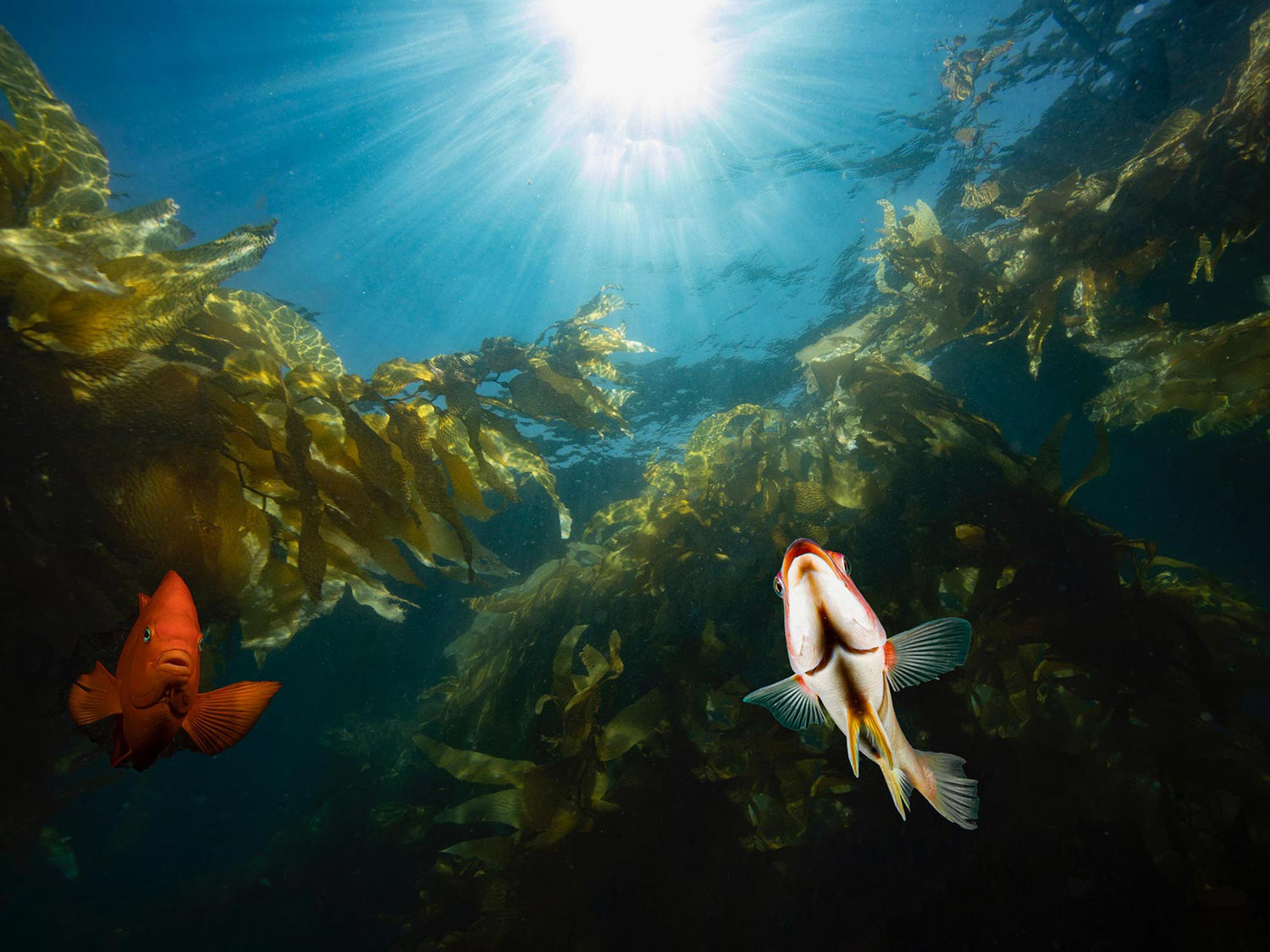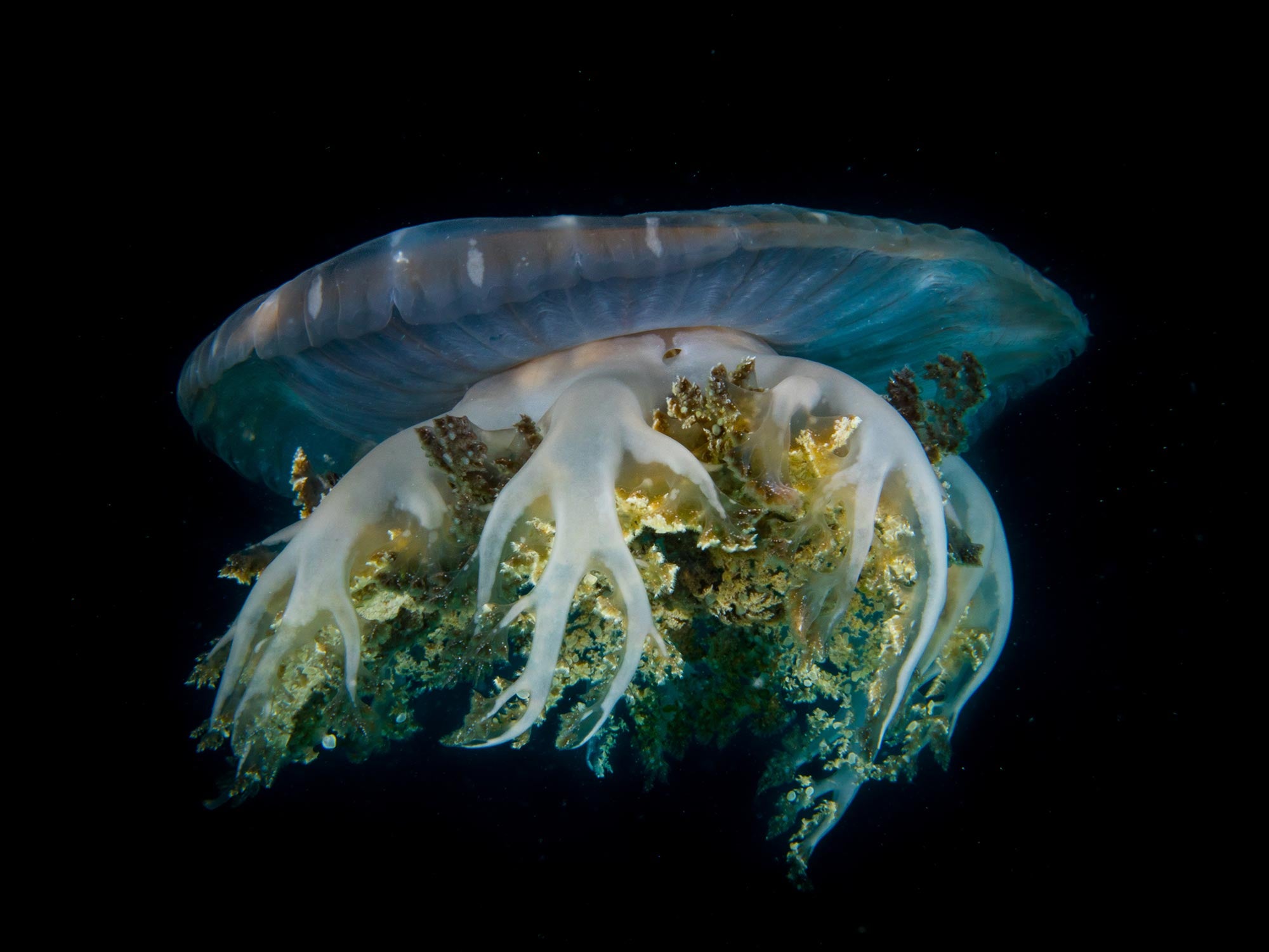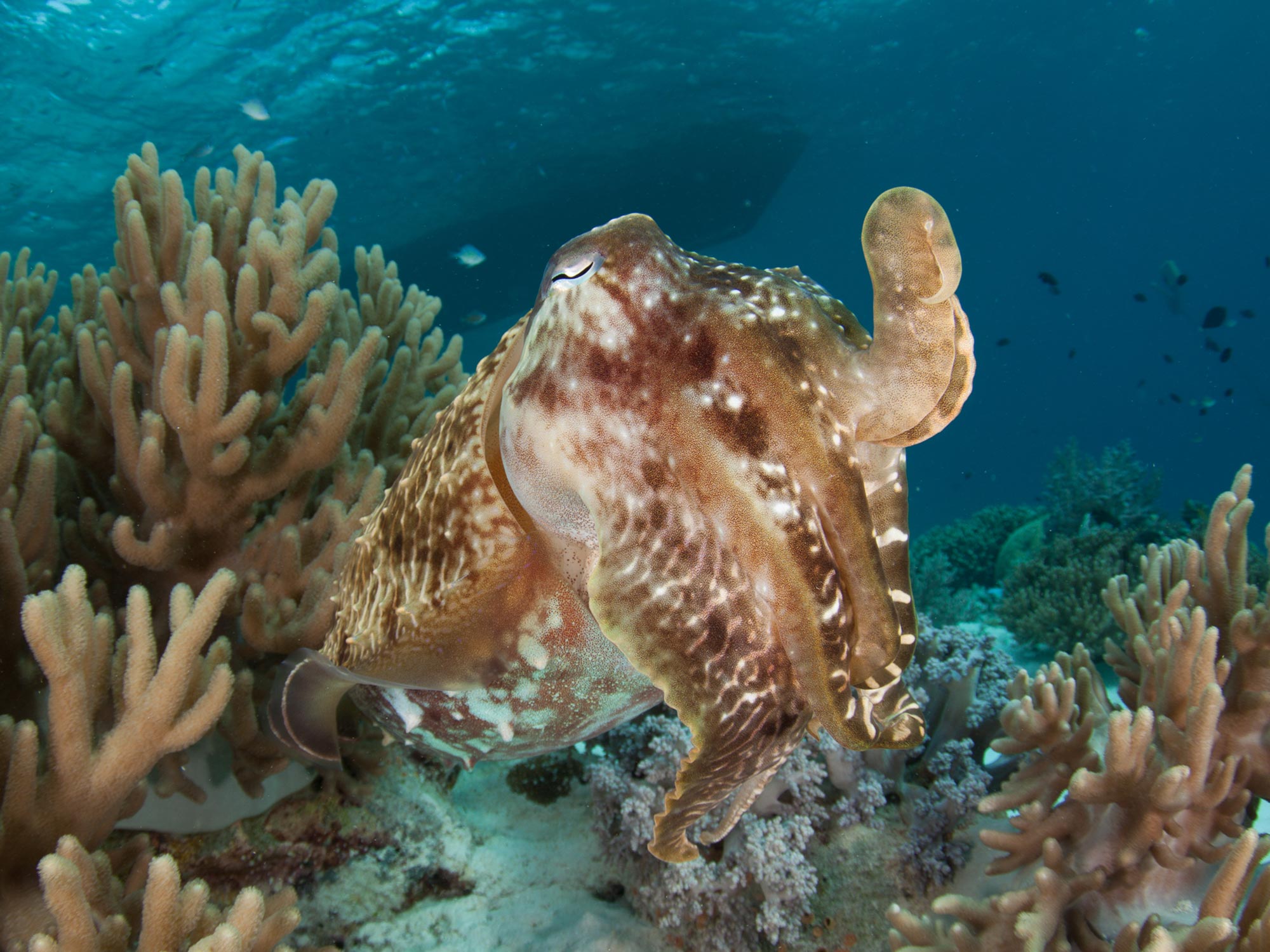Where
There are many types of kelp, fast growing and thriving in cold, clear water but certainly the massive “forests” off the coast of North America, and specifically California, are photographer favorites. Swimming through a kelp forest is like flying through a forest of redwoods. Life abounds in the kelp forest, and so do photo opportunities.
DSLR + Mirrorless
Mode: Manual is preferred, but if you are shooting natural light then Program or AV, TV, etc. can work well. We like to expose for the water column with an upward angle, without the sun in the frame.
ISO: 200-800 depending on the clarity of the water and the brightness of the sun that day. Kelp diving can be in very clear water on the right day, or it can be very dark. If the conditions are dark due to depth, clarity, or lack of sun, raise your ISO to the point of an acceptable shutter speed. If you are up in the canopy with light rays dancing around, shoot a low ISO.
Aperture: F-8 to F-22 depending on light and your camera angle (even wider on dark days or deeper dives). If you are using a super wide lens, the depth of field will be vast, even with an opened up lens.
Shutter Speed: With a flash, any synch speed will suffice (1/60th-1/200th). If you are shooting natural light, remember that the canopy is probably swaying in the surface swell which will probably move you around as well. Staying with a shutter speed of 1/125th second or faster will help prevent motion blur.
Lens: Fisheye lenses will work beautifully here, but any super wide lens will allow you to gather enough light in a wide scene for good exposure. There are many macro subjects in the kelp forest, but considering the massive size of this algae, the wide lens has a lot to offer. If you find your lens isn't wide enough, consider merging two images together as in a panorama, these can be merged in Lightroom easily and do not require the precision of a tripod.

Straight-up angles with wide lenses converge the lines of the forest. © 2022 Gary Burns
Point and Shoot
ISO: 200-400 for shallow, 600-800 deeper or darker.
Aperture: F-8 to start, but virtually any aperture will work if the ISO and shutter speed are balanced against this.
Shutter Speed: From 1/60th second to 1/250th second. Flash synch for your camera, a flash really help these images since ambient light will be strong.
Lens: Super wide is helpful for capturing the largest vistas, although macro opportunities are everywhere.

Repeating patterns are pleasing to the eye while telling the story of how kelp grows. © 2022 Jean Rydberg
Technique
A kelp forest can begin very deep. Swimming along the “holdfasts” that anchor kelp to the bottom and looking up into the canopy at light rays can be inspiring. Starfish and sea urchins can be a great subject for close-focus wide-angle, looking up with a wide lens toward the light. Kelp collects at the surface, forming a canopy, so most photographers will avoid surfacing in the canopy, or trying to surface swim across it. Where the canopy begins to collect (near the surface) will offer wonderful light play on a sunny day, some of the kelp fronds will glow as light passes through them.

Composing with the wide lens in the canopy means light and motion and color blending together. © 2022 Nirupam Nigam
Strobes
Move your strobes around to create harsh shadows for rich blacks, side light, light from above; backlit kelp fronds can glow. TTL will power up the strobes to match the sun once you have set a manual exposure on the camera for the ambient light.
Pro Tip: While composing your scene with light play through the kelp canopy, and the various elements (like a diver) that are included, don't be surprised if garibaldi fish come on to the scene. The intense orange color of these fish contrasts the green and blue of your background. Some flash fill wont hurt, but you will find these colors hold true from greater distances than you might expect (even if you are not using flash). They are also extremely easy to composite for repositioning if you are into Photoshop, the bright orange makes a very clean mask.

Move your strobes around to side light and the kelp will glow from the light passing through it. © 2022 Gary Burns
Additional Reading
Why You Need Strobes Underwater
Close Focus Wide Angle Underwater Camera Settings
Macro Close-Up Underwater Camera Settings
Diving Catalina Island with the Canon R5 and R6 [VIDEO]
Customer Photos | Douglas Klug in California's Kelp Forests and Beyond













